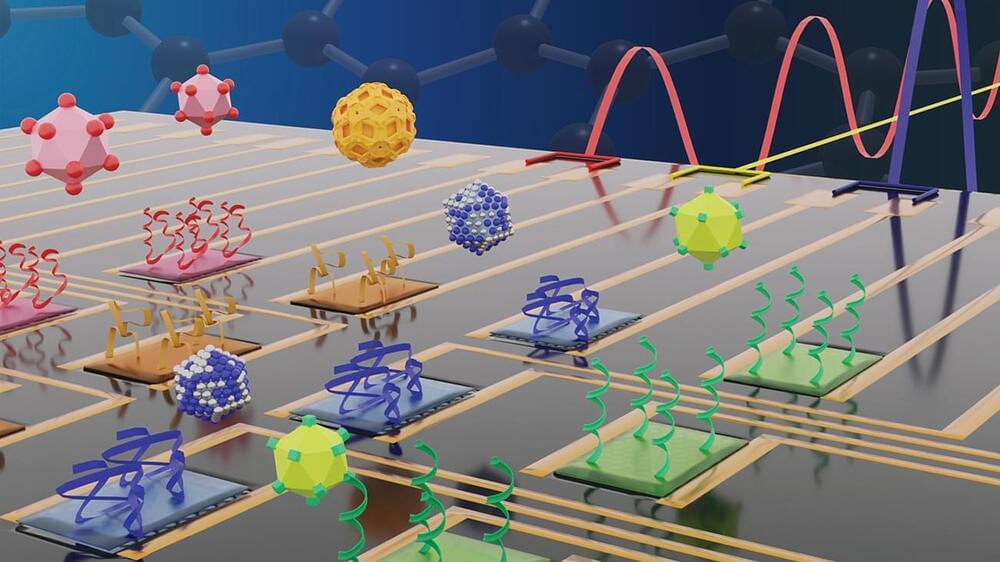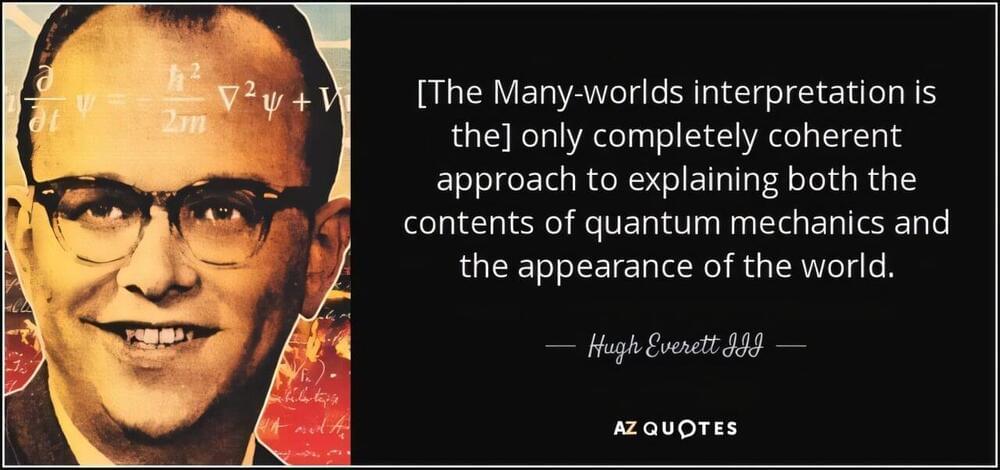As tech companies release a slew of generative AI updates, there’s a growing risk that educational practices and policies are struggling to keep up with new capabilities.



2024: A year when AI, quantum computing, and cybersecurity converged to redefine our digital landscape. For those navigating these complex technological frontiers, clarity became the most critical currency.
Inside Cyber, Key moments that resonated with our community:
• Cybersecurity Trends for 2025 Diving deep into the evolving threat landscape and strategic priorities.
• AI, 5G, and Quantum: Innovation and Cybersecurity Risks Exploring the intersection of emerging technologies and security challenges https://lnkd.in/ex3ktwuF
• PCI DSS v4.0 Compliance Strategies Practical guidance for adapting to critical security standards https://lnkd.in/eK_mviZd.
Inside Cyber, Looking ahead to 2025, the convergence of AI, quantum computing, and cybersecurity will demand unprecedented collaboration, education, and strategic thinking. Our collective challenge is transforming potential vulnerabilities into opportunities for innovation and security.
Grateful to Georgetown University, our growing professional network, and the organizations committed to understanding and shaping our technological future.

The University of Cape Town, along with the Giraffe Conservation Foundation, have conducted a large-scale study identifying significant cranial shape differences between four genetically distinct giraffe species. The findings suggest that these species exhibit unique developmental and morphological characteristics, which have implications for conservation efforts.
Taxonomic classification is critical for guiding good conservation strategies. Giraffes have long been categorized as one species with geographic variants, though advancements in research are reshaping this perspective.
In the study, “Heads Up—Four Giraffa Species Have Distinct Cranial Morphology,” published in PLOS ONE, researchers examined 515 giraffe skulls with 3D geometric morphometrics to analyze patterns of cranial variability. The dataset, the largest of its kind, included specimens from museum collections, wild populations, and taxidermy sources across Africa.
Link :
Imagine your lungs, those essential organs responsible for getting oxygen into your blood, suddenly tasked with a new job: making blood itself. It sounds almost unbelievable, right? For centuries, we’ve been taught that bone marrow is the powerhouse of blood production. Yet, a groundbreaking discovery has just turned that conventional wisdom upside down.
Researchers at the University of California, San Francisco, have found that our lungs do far more than help us breathe—they’re also busy creating millions of platelets every hour, playing an unexpected and crucial role in our blood supply. This discovery not only challenges what we thought we knew about the body but also opens the door to new possibilities in understanding blood production and its implications for human health.
For centuries, the bone marrow has been recognized as the cornerstone of blood production. This soft, spongy tissue located within the cavities of our bones serves as a bustling factory for manufacturing the essential components of blood. It produces red blood cells, which carry oxygen to tissues; white blood cells, the immune system’s defenders against infections; and platelets, the fragments that form clots to prevent bleeding. These vital elements work together to sustain life, ensuring oxygen transport, immune defense, and wound repair. This process, called hematopoiesis, has been considered the exclusive domain of bone marrow, a belief deeply ingrained in medical science.

Students learning quantum mechanics are taught the Schrodinger equation and how to solve it to obtain a wave function. But a crucial step is skipped because it has puzzled scientists since the earliest days—how does the real, classical world emerge from, often, a large number of solutions for the wave functions?
Each of these wave functions has its individual shape and associated energy level, but how does the wave function “collapse” into what we see as the classical world—atoms, cats and the pool noodles floating in the tepid swimming pool of a seedy hotel in Las Vegas hosting a convention of hungover businessmen trying to sell the world a better mousetrap?
At a high level, this is handled by the “Born rule”—the postulate that the probability density for finding an object at a particular location is proportional to the square of the wave function at that position.

Super saturday 1: productive day at the OEC!
Our inaugural Super Saturday session kicked off on a high note! Emmanuel showcased his handyman skills by expertly fixing two fluctuating lights at the Ogba Educational Clinic (OEC).
Special thanks to Mr. Kevin for his support in purchasing the necessary parts, including the choke, which made the repair possible.
Re grateful for the dedication and teamwork displayed by Emmanuel and Mr. Kevin. Their efforts have ensured a safer and more conducive learning environment for our students. +#buildingthefuturewithai #therobotarecoming #STEM
OpenAI, the company that makes ChatGPT, says in blogpost ‘we once again need to raise more capital than we’d imagined’
The father of gravity had some thoughts about music.
Support 12tone on Patreon to help us keep making cool videos! https://www.patreon.com/12tonevideos.
Watch this video on Nebula: https://nebula.tv/videos/12tone-isaac-newtons-lost-musical-brilliance.
Music history is littered with great thinkers, bringing a broad range of unique perspectives to the exploration of the art form. But a name you might not expect to see on that list is Sir Isaac Newton, president of the Royal Society and leader of the Scientific Revolution. And for good reason: he pretty much never wrote about music. It wasn’t an area particularly that interested him, and he rarely if ever listened to music for fun. But as a part of his well-rounded education, he did learn music *theory*, and a nearly-forgotten notebook from his college years tells us a lot about how he understood the subtle art of sound.
Merch: http://standard.tv/12tone.
Discord: https://discord.gg/pq2QBEw.
Facebook: https://www.facebook.com/12tonevideos.
Mastodon: https://mastodon.social/@12tonevideos.
Email: [email protected].
Script w/ sources: https://tinyurl.com/2vetb33p.
Huge thanks to our Elephant Club members:
Jill Jones.
Removing Space Junk is an issue, but technology is advancing so solutions are available, but people are too stupid to know what they are. There is a demand to remove space junk. In my Marketing class I was taught Marketing starts with demand. No one has yet to develop a solution. Space Junk has recyclable content, which money is spent on mining to develop. 🙄 Many people spend money many ways without thinking of its impact. Musk spent like 40 billion for Twitter instead of finding a solution for recycling “Space Waste”, which adds value to his companies.
“The Universe is infinite But space has its limits Rockets a launching Sat’lites are orbiting Explosions in Space Oh what a waste Fragments go flying And we go crying “Space junk we’ve got” Man-made or not Then comes Kessler Who knows the better When things collide Their debris do multiply Thanks to partnering And NASA’s gathering We look for ways To manage the spray” – S. Thuy Nguyen-Onstott.
International Space Station (ISS)Orbital Debris Collision Avoidance Process
One may ask, “What is Orbital Debris?” Although we don’t see space junk in the sky, beyond the clouds and further than the eye can see, it enters low Earth orbit (LEO).

Can we examine the teeth of living fish and other vertebrates in detail, repeatedly over time, without harming them?
Previously, small animals often had to be euthanized to obtain precise information, but now scientists have found a new way to humanely study detailed dental characteristics of vertebrates. This customizable method can be used for both living animals and museum specimens and has been published in the Journal of Morphology.
It’s estimated that anywhere from three to seven percent of school-age children may have dyslexia, a neurodevelopmental issue that affects reading, spelling, and writing. There are different ideas about why dyslexia occurs, although they relate to dysfunction in brain networks, and are likely due to multiple causes in affected individuals; the disorder may not have a singular underlying cause. Neuroimaging studies of dyslexic individuals have produced inconsistent results.
Since dyslexia has a heritable, and therefore, genetic component, scientists wanted to know more about how genetics and brain mapping could reveal more about the pathology of dyslexia. A new study has shown that carriers of genetic variants that increase the risk of dyslexia also have changes in brain structure, which occur in areas that are related to language, motor coordination, and vision. The findings have been reported in Science Advances.